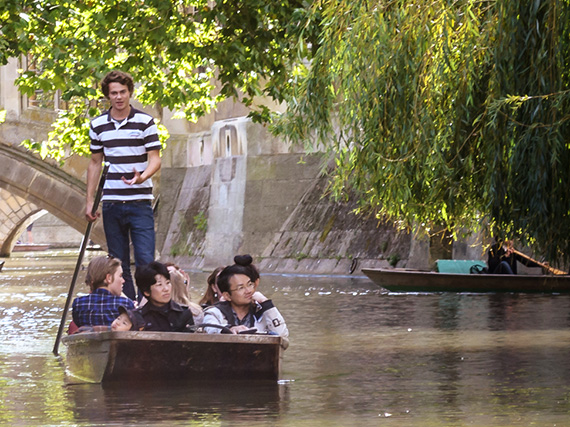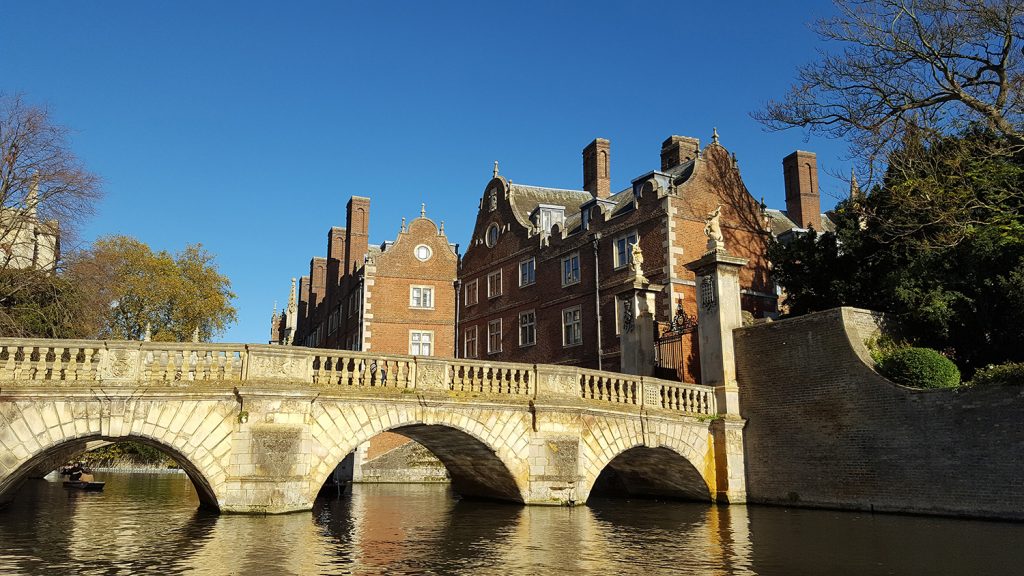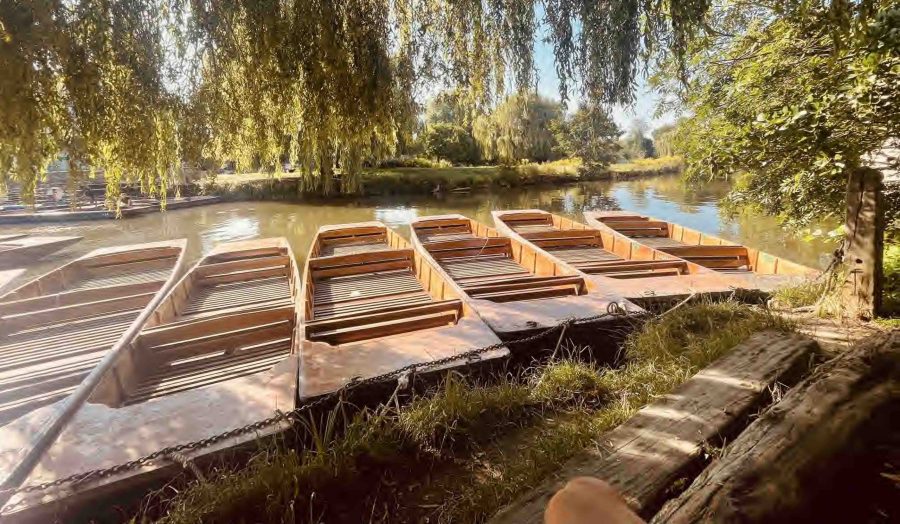St.John's College, Cambridge

'The College of St John the Evangelist in the University of Cambridge'
St.John’s, known formally as ‘The College of St John the Evangelist in the University of Cambridge’ but colloquially as ‘Johns’, is one of the wealthiest and most prestigious colleges within Cambridge University.
Founded in 1511 by Lady Margaret Beaufort & John Fisher, the college originally focused on liberal arts, theology and biblical languages. By the 20th century, the college had become a centre for the study of classics, mathematics, medicine, humanities and sciences.
Visiting St.John’s
The campus at St.John’s is one of the largest within Cambridge University and is regularly open to visitors throughout the year. Visitors can enter the college via the Great Gate, located on St.John’s Street, Cambridge, CB2 1TP. Opening hours are between 10:00am and 5:30pm, with the last entrance at 4:30pm.
Adult tickets cost £12. Children, students and concessions cost £6. Alumni, prospective students and Cambridge residents can enter free of charge.
The Great Gate
The Great Gate, completed in 1516 is the main entrance to the college. The gate is decorated with the coat of arms of the college’s founder, Lady Margaret Boufort, which have protective ‘yales’ placed on either side. Yales are mythological animals which have the body of an antelope, tale of an elephant and head of a goat. They can either be a representation of protection and security, or grace and elegance, depending on the artist’s depiction and placement.
Above The Great Gate stands a statue of St John the Evangelist. He holds a poisoned chalice wrapped in a serpent and stands next to his traditional symbol of the eagle.
Foundation of St.John’s College & its founders.
St.Johns was built on the former grounds of a monastic house, a place where monks devoted themselves to spiritual work whilst renouncing worldly pursuits. The house was known as ‘the hospital of St.John’, named after St.John the Evangelist, and had been in place since at least the 13th century.
By The 16th century the hospital had fallen into decay and restoration. John Fisher, Bishop of Rochester and chancellor of the university, persuaded close friend Lady Margaret Beaufort, grandmother of Henry the 8th, to transform the decaying monastic house into a new college.
Lady Margaret Beaufort died in 1509, two years before the completion of the college. Following her death, John Fisher was responsible for releasing funds from the Beaufort’s estate to ensure the foundation of St.Johns, which was officially established on the 9th of April 1511.
Margaret Beaufort (1443 – 1509) was the mother of Henry 7th. She founded two colleges at Cambridge University, both from the advice of St. John Fisher. Completed an endowment for Christ college in 1505 and endowed large amounts of her estate to St.John’s college.
St.John Fisher (1469 – 1535) helped to establish two colleges at Cambridge University through the help of close friend, Margaret Beaufort. He is also known for resisting King Henry the 8th during the reformation by refusing to recognise royal supremacy over the catholic church. He wrote books against Lutheranism, opposed government interference with the church, defended Catherine of Aragon and opposed Henry 8ths position as ‘Supreme Head of the church and Clergy of England’. St. John Fisher was Imprisoned in the Tower of London in March 1534 and executed the following June for treason.

Life at St.Johns
St.John’s is home to more than 150 fellows; resident academics who teach and research at the college. The college also employs overs 250 members of full time staff, who help to run and maintain the daily operations of the college.
The number of students living within the campus increased over the years as the curriculum at St. John’s widened. The college now has more than 580 undergraduate students and over 300 graduates.
St.John’s Alumni
Former students (known as “Johnians”) include artists, scientists, Prime Ministers and leaders in business. Most notable Johnians include:
William Wordsworth ( poet), Hugh Denni (actor/ comedian), Douglas Adams (author), Jin Yong ( author), Lord Palmerston ( former British foreign secretary), Manmohan Singh ( 13th Prime Minister of India).
St.Johns has also contributed 10 Nobel prizes to Cambridge Universities’ collection, mainly from physics. The most recent winner of the prize was Roger Penrose, who won the 2020 Nobel prize in Physics for “the discovery that black hole formation is a robust prediction of the general theory of relativity”.
Cripps Building
The architectural style of st.Johns includes a range of Victorian, Tudor and neo-Gothic and Brutalist buildings.
The most recent addition to the campus is the Cripps Building (1966 – 67), which was built to accommodate the growing number of new students following the post-1945 expansion of the college. The building was funded by the Cripps Foundation and designed by two architects, Phillip Pwowell and Midalogo Moya. This Brutalist accommodation block has won many awards and has become a landmark for late twentieth-century architectural style.
New Court
The Cripps Building sits behind the nineteenth century neo-Gothic New Court (1831). Designed by Henry Hutchinson and Thomas Rickman, the building provides accommodation for second and third year students and has a number of interesting features which can be seen from the river. A statue of an eagle, which is often associated with John Fisher, can be seen sitting above the main entrance. It’s said that the eagle’s head has been purposely placed to look away from the college’s long standing rival, Trinity, which is located directly across the river. The New Court also has a stone clock tower which is missing the timepiece, a cargo entrance and swan trap’, which sits just behind The Bridge of Sighs. The inclusion of the swan tap is based on the myth that aside from the Queen, only members of St.John’s college can eat swans.
Bridge of Sighs & Kitchen Bridge
St.John’s is the only college along the river to have two bridges, the most well known being The Bridge of Sighs (1831). The real name for the bridge is ‘the New Bridge’, as it was built to connect the New Court to the rest of the college campus. The Colloquial name comes from the similarities between the original Bridge of Sighs in Venice, which connected the prison to where prisoners were executed.
The Bridge of Sighs was originally intended to only be viewed from the second oldest bridge on the river – Kitchen Bridge(1709 – 1711). The real name is the Wren Bridge as it was designed by Sir Christopher Wren, however the bridge is known as Kitchen Bridge from a time when students needed to cross the bridge on their way to the college kitchens.
Want to view these buildings for yourself? Join a river tour today.

